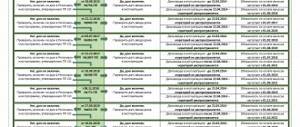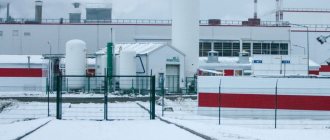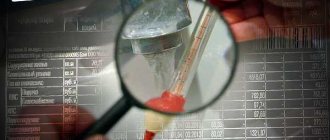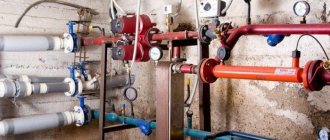The concept of SOI
Owners of residential premises see the abbreviation SOI in their payment document. The interpretation of this concept is represented by the content of common property in an apartment building. When generating a receipt, resource supply companies or management organizations include the SOI of hot and cold water, electricity, and heating in the document.
Accordingly, these charges assume amounts for the use of services for general household needs. The obligation to pay such charges is determined by Government Decree No. 354 of 2011.
Changes in law and SOI
Currently, the rule is that standards must be applied when calculating SOI. Homeowners are obligated to pay strictly what is determined by these standards. The part not covered by the funds of the apartment owners is subject to payment by the management company.
Depending on who manages the house, the fee may be paid by:
- UK;
- homeowners association.
Changes in this regard were made in Government Decree No. 354 of 2011. In connection with these innovations, management companies began to actively combat the theft of electrical energy, monitor the formation of leaks and monitor that all residents pay the charges in the receipt.
Impact of SOI on Payment
The main part of the standards has not changed. Significant adjustments have been made regarding the SOI in an apartment building for electricity. The new rules stipulate that if there is an attic and basement in the apartment building, citizens are responsible for paying for the maintenance of these premises.
Before the adjustments were made, such area was not subject to payment obligations. The result of the innovations was that expenses for general household needs increased. The technical passport of the MKD is subject to verification. If this act indicates that utility-type networks are located in the attic and basement, then the additional amount of charges is reflected in the receipt.
Property owners have the opportunity to equip common areas with metering devices. Then they can prove that there is no resource consumption in the basement and attic. You will not need to pay for SOI.
Another change was that citizens deprived of the ability to work, regardless of group, lost the right to benefits regarding general house charges. This category of persons now pays ODN at the full rate.
How will this affect payment?
Most of the standards and payments have not changed at all. Most of all the changes affected the SOI in the MKD for electricity. According to the new rules, now, if a common house has an attic and a basement, then you have to pay for their area too. Previously, there was no need to pay for these premises. Now payments for general household needs may increase significantly.
To prevent this, HOAs must announce a general meeting and change the calculation procedure to calculation based on instrument readings. Otherwise, charges for the use of utility resources will take into account consumption standards. This means that the technical passport of the house is checked. If it indicates that utility networks run through the attic or basement, then they will be included in the receipts in the form of an increased payment amount. If you install metering devices, they will be able to record whether the electricity consumption actually occurred.
Important! Now these payments do not apply to benefits for disabled people of all groups. This means that SOI electricity and water use will have to be paid at full tariff, since they are no longer utility bills. The essence of the payment has not changed.
SOI calculation
The calculation procedure is established separately for hot and cold water supply and electricity. Standards are provided for the above needs.
The following formula is used for calculation:
C = (N*OP*VK)/OSN, where:
- C – amount to pay;
- N – approved consumption standards;
- OP – the size of the common premises (this includes entrances and attics);
- VK – the size of the apartment, the right of ownership to which is vested in the citizen;
- OPN is the total value of non-residential and residential premises.
To clarify information about the area of the house, you need to refer to the technical passport. The amount obtained as a result of the calculation using the above formula must be multiplied by the current tariff for water supply or electricity consumption.
It must be taken into account that the general calculation of technical energy cannot be included in household needs. This indicator is reflected in utilities and is subject to payment according to established tariffs.
If the calculations made by the citizen themselves end up with a different value compared to the receipt, this means that the tenant or an employee of the management company made a mistake. If checking your own calculation does not show any violations, then you need to contact the Criminal Code and ask to provide the calculation.
Amount of payment for SOI
The standard in this case is defined differently. The reason is that the amount of payment for cold and hot water is set by local authorities. Several factors influence the amount of electricity.
These include:
- type of apartment building;
- design features. They manifest themselves in the fact that there is an elevator and other equipment.
The calculation can be carried out after the local authorities determine the tariffs.
Drainage - what is it on the receipt?
Nowadays, many people monitor their utility bills and navigate calculations and concepts. Let us clarify what the lines in the receipts mean that are associated with such an important resource for us as water. Its consumption by each of us is divided into two concepts:
- Water supply . This is the water that is supplied by the utility supplier to the systems of an apartment building; it runs from our taps. According to the regulatory document, a round-the-clock uninterrupted supply of both cold and hot water of proper quality must be ensured. This means that purified water that meets the standards must flow from the taps in the living area. The temperature of the hot water supply is also established by the standards and must be supplied no lower than their values (water heating is highlighted on the receipt as a separate line).
- Water disposal . The received water is used and then transported through the sewerage system. The law gives the concept of this process, which includes the reception of wastewater, transmission through centralized sewerage systems to treatment facilities and their subsequent treatment (clause 2 of article 2 of Law No. 416-FZ).
What is included in SOI
What is included in the contents of the common property of an apartment building is specified in the provisions of the Housing Code of the Russian Federation.
The list includes:
- water drainage;
- carrying out repair work on insulation of walls, roofs and facades;
- cleaning the interior, roof and drainage system;
- disposal of waste water in order to maintain the normal condition of the roof of the apartment building;
- processing of structures made of wood. These measures help to increase the service life of such elements;
- landscaping of the local area;
- gas equipment maintenance;
- maintaining general security;
- use of electrical energy.
In order for the property of an apartment building to be in satisfactory condition, it must be constantly used. The rules established regarding the maintenance of property in apartment buildings indicate that management organizations are responsible for performing work related to meeting the needs of citizens living in the house.
For example, this is the elimination of emergency situations when a pipe breaks or flooding occurs. The management company is responsible for maintaining a normal temperature in common areas. In addition, obligations are associated with seasonal work.
This abbreviation is included in the general receipt. For this reason, it will not be possible to refuse payment for SOI. If a citizen does not pay part of the funds indicated in the payment document, he begins to be in debt, to which a penalty is then added.
Carrying out seasonal work
Depending on what time of year the payment is due, different services may be included in the receipt. The table shows summer and winter work in the apartment building.
| Summer | Winter |
| Carrying out façade repairs, placing information signs | Interior restoration |
| Treatment of building joints | Sanitary cleaning inside the house |
| Landscaping | Snow and ice removal |
| Cleaning near the apartment building | Communication system maintenance |
The list of works is determined by the owners of the premises and representatives of the management company. The amount of rent does not affect the volume of services provided. This type of service is aimed at preventing deterioration of the house.
Carrying out routine repairs and garbage removal
Current repairs are carried out on the basis of agreement between the positions of apartment owners and the management of the management organization. It includes measures to maintain boiler room equipment, eliminate leaks in the water supply system, and restore parts of the building.
The amount of payments is determined during a general meeting of apartment owners. The decision is made by voting.
In the payment document, waste removal is classified as SOI. For this reason, management companies do not have the right to charge additional fees for this service. If there is such a line in the payment slip, you need to contact the Criminal Code with a complaint, in case of inaction - to the housing inspectorate or court.
Thus, what SOI is in a housing and communal services receipt is defined in the Housing Code of the Russian Federation and Government Decree No. 354 of 2011. Apartment owners are responsible for paying this fee. Otherwise, fines will be applied to them.
What is ODN?
This publication is part of the series of articles “Myths of Housing and Communal Services”, dedicated to debunking false theories of the housing sector. Myths and false theories, widespread in the housing and communal services sector of Russia, contribute to the growth of social tension, the development of the “Concept of Enmity” between consumers and providers of public services, which leads to extremely negative consequences in the housing industry.
The articles in the series are recommended primarily for consumers of housing and communal services, however, specialists in housing and communal services may also find something useful in them. In addition, distributing publications in the “Housing and Utilities Myths” series among housing and communal services consumers can contribute to a deeper understanding of the housing and communal services sector by residents of apartment buildings, which leads to the development of constructive interaction between consumers and providers of utility services.
The full list of articles in the series “Myths of Housing and Public Utilities” is available at the link > > >
**************************************************
This article does not even consider a false theory, but rather a misconception that “utilities consumed in the use and maintenance of common property” (CR SOI), previously called (and with direct management still called) “utilities for common needs" (KU ODN), in their physical (technical) meaning, are precisely those communal resources that are physically spent specifically for servicing elements of common property. That is, supposedly such CD SOI as hot and cold water are spent only directly on washing floors, walls in entrances, watering green spaces on the land plot under an apartment building (MKD), on maintenance (cleaning, cleaning, etc.) other elements of the common property, and electricity for the purpose of maintaining the common property is spent on the operation of elevators, lighting of premises as part of the common property, flights of stairs, flights, etc.
Let’s figure out what KR SOI (KU ODN) actually is, where these resources are spent physically, is it possible to measure their real physical volume of consumption with a special separate metering device (called a metering device “MOP”, “ODN” or something else) , and also whether it is possible to establish the fact of the absence of consumption of these resources due to the absence of a point of consumption, or due to zero readings of a special device that takes into account the consumption of a particular resource on SOI at the corresponding point of consumption of this resource.
The essence of the false theory
Utility resources consumed in the maintenance of common property (KR SOI), and with direct management - utilities for common house needs (KU ODN), are no different from the utility resources consumed in the premises of an apartment building (MCD).










